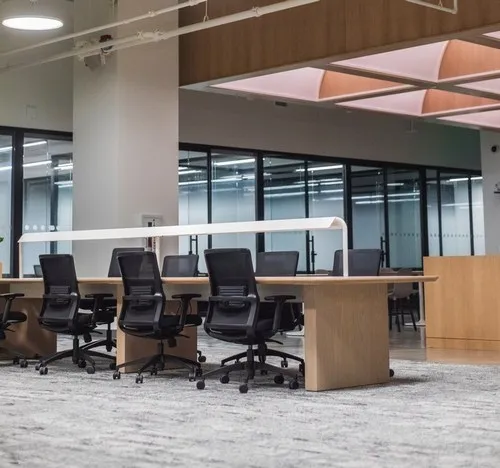What Factors Contributed to India's 40% Surge in Office Leasing in H1 2025?

Synopsis
Key Takeaways
- 40% increase in office leasing year-on-year.
- Bengaluru leads with 6.55 million sq. ft. absorbed.
- Pune shows a historic growth of 188% in net absorption.
- New office supply rises by 25%.
- IT/ITeS sector remains the dominant driver of demand.
New Delhi, July 3 (NationPress) India’s commercial real estate sector has experienced remarkable growth during the first half of 2025, as net office leasing in the leading seven cities surged by 40 percent year-on-year (YoY), according to a recent report.
Data from Anarock Research reveals that net office absorption increased from approximately 19.08 million sq. ft. in H1 2024 to nearly 26.8 million sq. ft. in H1 2025.
Additionally, new office supply saw a significant rise of 25 percent, reaching close to 24.51 million sq. ft. during the same timeframe.
Industry experts attribute the robust performance of the office market to India’s consistent economic growth and its enhancing global reputation as a top business hub.
Peush Jain, Managing Director of Commercial Leasing & Advisory at Anarock Group, stated that the nation continues to draw substantial office leasing from global capability centers (GCCs) and corporations based in the United States.
He further emphasized that India’s economic resilience contrasts with the policy uncertainties in the US, making it an increasingly appealing location for long-term investments.
Bengaluru led the charge in leasing activities, absorbing around 6.55 million sq. ft. in H1 2025 — a remarkable 64 percent increase from 4 million sq. ft. during the same period last year.
Pune showcased the most impressive annual growth in net absorption, skyrocketing by 188 percent to 3.8 million sq. ft., up from 1.32 million sq. ft. the previous year.
In contrast, Kolkata was the lone city among the top seven to experience a decline in leasing, falling 51 percent to just 0.45 million sq. ft.
When it comes to new office space completions, Bengaluru again led the way, adding approximately 6.91 million sq. ft. in H1 2025, marking a 26 percent increase from the previous year.
Pune recorded an outstanding 533 percent increase in new supply, rising from merely 0.9 million sq. ft. in H1 2024 to over 5.7 million sq. ft. this year, as stated in the report.
In terms of sector performance, the IT/ITeS sector continued to dominate demand, accounting for 29 percent of total office leasing. This was closely followed by the coworking sector at 22 percent and the BFSI sector at 18 percent.









